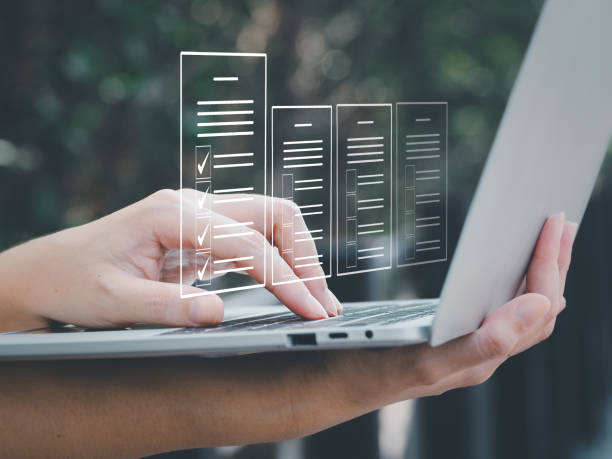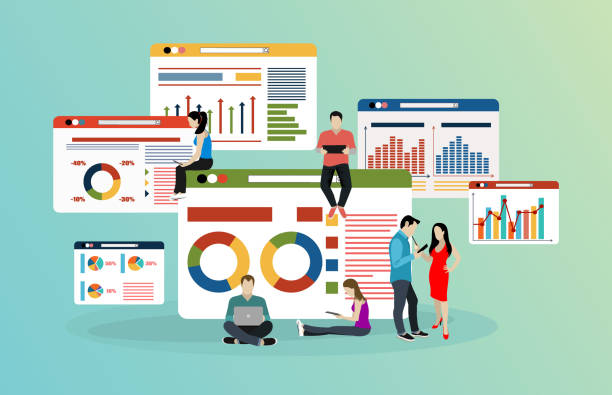What is On-Page SEO and Why is it Important?

Have you ever wondered why some websites rank higher than others in search results? One of the most important reasons for this is on-page SEO or on-page optimization.
#On_page_SEO is a set of actions performed within your website to improve its ranking in search engine results pages (SERPs).
This process includes optimizing various on-page elements, including content, HTML code, and user experience.
The importance of on-page SEO lies in helping search engines better understand your content and identify it as relevant to user searches. Without a strong on-page SEO strategy, even the best content may never be seen.
This type of optimization directly affects factors such as user dwell time on the site and bounce rate, both of which are important signals for search engines.
Its main difference from off-page SEO is that on-page SEO is entirely under your control, and you can directly influence it.
This section is explanatory and educational, aiming to build the foundations of your understanding of on-page optimization.
Does your current website showcase your brand’s credibility as it should? Or does it drive away potential customers?
Rasaweb, with years of experience in professional corporate website design, is your comprehensive solution.
✅ A modern, beautiful website tailored to your brand identity
✅ Significant increase in lead generation and new customer acquisition
⚡ Contact Rasaweb now for a free consultation on corporate website design!
The Role of Keywords in On-Page SEO

One of the main pillars of on-page SEO is the proper research and use of #keywords.
This specialized process involves finding phrases and words that your target audience uses to search for information, products, or services.
But simply finding keywords is not enough; you need to know how to effectively incorporate them into your content.
Strategically placing keywords in the page title, meta description, subheadings (H1-H6), and the main body of the content is crucial. However, excessive repetition of keywords (keyword stuffing) should be avoided, as this can lead to penalties from search engines.
The focus should be on providing natural and valuable content that naturally includes relevant keywords.
Using long-tail keywords can also help attract more targeted traffic, as these keywords usually have a more specific search intent.
This expert guidance helps you improve your keyword strategy for on-page optimization and ensures that search engines clearly understand the main topic of your pages.
This is an important step towards achieving higher rankings.
Content Structure and HTML Tag Optimization for On-Page SEO
![]()
Content structure and #HTML_tag optimization play a vital role in on-page SEO.
Tags such as Title Tag, Meta Description, and Heading Tags (H1-H6) help search engines find your content organized and understandable.
The title tag should be attractive, concise, and include the page’s main keyword, as it is the first thing users see in search results.
The meta description should also be compelling and include keywords, encouraging users to click on your link.
H1 to H6 tags provide a hierarchical structure to your content and improve readability for both users and search engine crawlers. H1 is typically used for the main page title, and H2 for the main section headings.
Furthermore, using Alt tags for images with relevant keywords helps search engines understand your visual content and appear in image searches.
This specialized approach not only helps on-page SEO but also enhances user experience by providing organized and navigable content.
Table 1: Key On-Page SEO Elements
| Element | Description | Importance in On-Page SEO |
|---|---|---|
| Title Tag | Visible title in browser tab and search results | First ranking factor, attracts clicks |
| Meta Description | Short summary of page content in search results | Attracts users to click (CTR) |
| Heading Tags (H1-H6) | Titles and subtitles for content organization | Increases readability, helps search engines understand content structure |
| Image Alt Text | Textual description for images | Helps search engines understand image content, accessibility |
| Friendly URL | Page address understandable to humans and search engines | Increases readability, helps understand page topic |
The Importance of High-Quality and Engaging Content in On-Page SEO
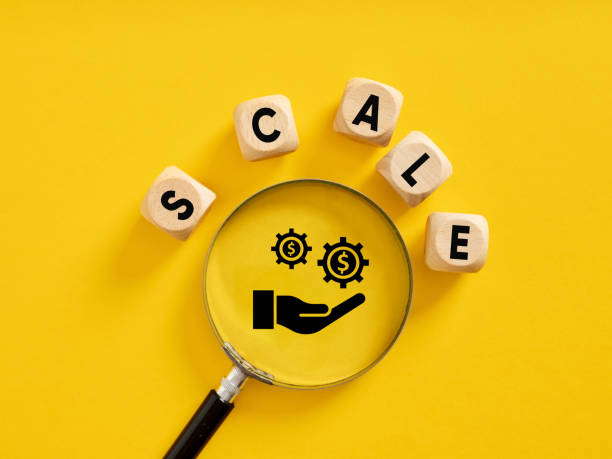
High-quality content is the cornerstone of any successful #on_page_SEO strategy.
Did you know that search engines, especially Google, have increasingly focused on user experience and content quality? It’s no longer enough to just include keywords in your content; your content must truly answer user questions, add value, and keep them engaged.
Educational, specialized, explanatory, and even entertaining content that is well-written not only helps users but also sends many positive signals to search engines.
Low bounce rate, high dwell time on the page, and content sharing are all indicators of content quality that significantly help your ranking in on-page SEO.
Fresh and updated content can also continuously attract new traffic and increase your site’s authority in a specific field.
This is a thought-provoking content that compels you to think about quality over quantity and ultimately adopt a comprehensive approach to on-page optimization.
Worried about losing customers because you don’t have a professional e-commerce website?
With e-commerce website design by Rasaweb, forget these worries!
✅ Significant increase in sales and conversion rate of visitors to customers
✅ Professional and user-friendly design that builds customer trust
⚡ Get a free consultation from Rasaweb
Internal Linking: A Powerful Strategy in On-Page SEO
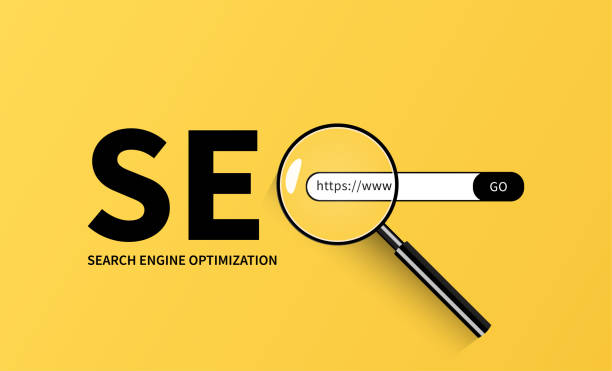
Internal linking is one of the most powerful yet often overlooked aspects of #on_page_SEO.
Did you know that internal links not only help search engines discover and index new pages but also assist in distributing PageRank throughout your website? A strong internal linking strategy, using relevant anchor texts, signals to search engines which of your pages are more important and what topics they cover. For example, if you have a main page about “on-page SEO,” you can link to it from other related articles using anchor texts like “expert on-page SEO tips.”
This helps improve search engines’ topical understanding of your website and allows users to easily navigate your site.
This specialized guide shows how internal links can improve user experience and distribute authority among your pages, both of which are crucial for success in on-page optimization.
Technical Aspects of On-Page SEO: Site Speed and Mobile Friendliness

The technical aspects of on-page SEO are as important as content, especially when it comes to #site_speed and #mobile_friendliness.
In today’s world, users expect websites to load quickly and display well on various devices, including mobile.
Google has also doubled the importance of these factors with the introduction of Core Web Vitals and emphasis on mobile-first indexing.
A slow or unresponsive website can seriously harm your on-page SEO ranking, even if you have excellent content. Optimizing images, compressing codes, using caching, and choosing a high-speed host are all actions that can help improve your site’s speed.
Ensuring responsive design and proper website performance on mobile is also a core requirement for on-page optimization.
This analytical section shows how technical issues can disrupt user experience and directly impact your on-page SEO performance.
Using Schema Markup and Structured Data in On-Page SEO

Using #schema_markup and #structured_data is one of the most advanced and effective techniques in on-page SEO.
Did you know that by adding schema codes to your website, you can help search engines understand your content more deeply? These small codes provide additional information about your page’s content, such as reviews, recipes, events, or product information, to search engines.
This deeper understanding can lead to the display of “Rich Snippets” in search results, which include more prominent information like star ratings, prices, or cooking times. Displaying rich snippets increases your click-through rate (CTR), even if your ranking doesn’t change.
This is an educational and specialized guide that can significantly help your website’s visibility in search results and is very important for on-page optimization.
Correct implementation of schema markup differentiates your website from competitors.
Table 2: Common Schema Markup Types and Their Applications
| Schema Type | Application | Rich Snippet Example |
|---|---|---|
| Product | For e-commerce products | Price, availability, star rating |
| Review | User reviews and ratings | Rating stars, number of reviews |
| Recipe | Cooking instructions | Cooking time, calories, image |
| FAQPage | Frequently Asked Questions pages | Display Q&A in search results |
| Article | News or blog articles | Title, image, publication date |
Common On-Page SEO Mistakes and How to Avoid Them

On the path to #on_page_SEO optimization, you may encounter common #SEO_mistakes that can render your efforts ineffective.
One such mistake is duplicate content, which can result from pages with different URLs, printer-friendly versions, or content copied from other sites. Google hates duplicate content and penalizes it.
Another common error is the improper use of keywords or “keyword stuffing,” which not only harms your ranking but also severely diminishes user experience.
Broken links are also a major problem; they are not only frustrating for users but also signal to search engines that your site is not well-maintained.
Lack of image optimization (neglecting Alt Text and compression) and slow page loading speeds are also issues that can harm your on-page SEO.
By performing regular SEO audits and using relevant tools, you can identify and fix these errors.
This guiding and analytical section helps you avoid these pitfalls and make your website more effective for on-page optimization.
Research shows that 80% of customers trust companies with a professional website more. Does your current website inspire this trust?
With Rasaweb’s corporate website design services, permanently solve the problem of customer distrust and a weak online image!
✅ Create a professional image and increase customer trust
✅ Attract more sales leads and business growth
⚡ Get a free consultation
Essential Tools for Analyzing and Improving On-Page SEO
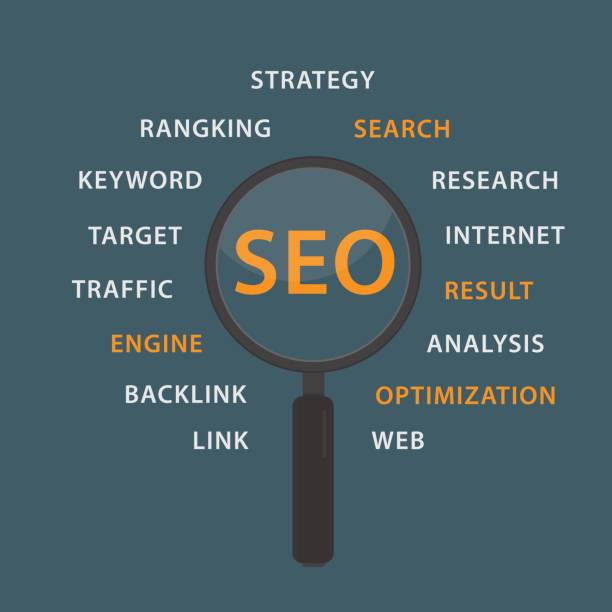
To succeed in #on_page_SEO, knowing the principles alone is not enough; you also need the right #SEO_tools to analyze and improve your website’s performance.
Google Search Console (Google Search Console) is a vital tool that allows you to view your site’s performance in Google search results, identify crawl errors, and check the indexing status of your pages. Google Analytics (Google Analytics) also provides valuable information about user behavior on your site, including dwell time, bounce rate, and user flow, all of which can assist your on-page SEO strategy.
Paid tools like Ahrefs and SEMrush offer more comprehensive information on keywords, internal links, and competitor analysis, which are essential for a specialized approach to on-page optimization.
Screaming Frog is excellent for technical site audits and identifying on-page issues.
This specialized and practical guide helps you continuously monitor and optimize your on-page SEO performance by utilizing these tools.
The Future of On-Page SEO and New Trends

The world of SEO is constantly evolving, and #on_page_SEO is no exception.
New trends such as #AI in search, voice search, and a greater emphasis on E-A-T (Expertise, Authoritativeness, Trustworthiness) are shaping the future of on-page optimization.
With more advanced algorithms, search engines are capable of a deeper understanding of user intent and content.
For future success, your content must be optimized not only for keywords but also to answer complex questions and the intent behind searches. Voice search requires a focus on natural language and conversational keywords.
Furthermore, building credibility and trust through expert content and authoritative authors, in line with E-A-T principles, has become increasingly important.
This news and analytical section looks at upcoming trends and shows how your on-page SEO strategy must be flexible and adapt to these changes to always stay at the top.
Frequently Asked Questions
| Question | Answer |
|---|---|
| What is On-Page SEO? | On-Page SEO involves optimizing elements that are directly under your control and within your website. Its goal is to help search engines better understand the page content and improve its ranking. |
| Why is On-Page SEO important? | On-Page SEO provides clear signals to search engines about the page’s content, improves user experience, and increases the chance of attracting organic traffic. |
| What are the most important On-Page SEO factors? | Keywords, Title Tag, Meta Description, URL structure, quality content, image optimization, and internal links are among the most important factors. |
| What is the role of the Title Tag in On-Page SEO? | The Title Tag is one of the most important signals for search engines and users, defining the main topic of the page. It should include the main keyword and be engaging. |
| How important is the Meta Description? | The Meta Description does not directly affect ranking, but it can improve the click-through rate (CTR) by encouraging users to click. |
| How to optimize images for On-Page SEO? | By using descriptive file names, appropriate Alt Text containing keywords, compression to reduce size, and correct dimensions. |
| What is the impact of Internal Links on SEO? | Internal links help search engines discover and index site pages, distribute authority (PageRank) across the site, and improve user navigation. |
| Is page loading speed an On-Page SEO factor? | Yes, page loading speed is a critical factor in on-page SEO and user experience. Slower pages can lead to higher bounce rates and lower rankings. |
| What are the characteristics of quality content for On-Page SEO? | Quality content must be comprehensive, unique, relevant, trustworthy, readable, and fully answer users’ needs and questions. |
| How can keywords be used in content? | Keywords should be used naturally in the title, subtitles, first paragraph, body text, and image Alt text. Avoid Keyword Stuffing. |
And other services of Rasa Web Advertising Agency in the field of advertising
Smart Brand Identity: A professional solution for digital branding focusing on key page optimization.
Smart Direct Marketing: A combination of creativity and technology to improve SEO ranking through key page optimization.
Smart Content Strategy: Designed for businesses looking to attract customers through user experience customization.
Smart Data Analysis: A combination of creativity and technology for digital branding through custom programming.
Smart Link Building: A specialized service for growing customer acquisition based on key page optimization.
And more than a hundred other services in the field of internet advertising, advertising consulting, and organizational solutions.
Internet Advertising | Advertising Strategy | Advertorial
Sources
Comprehensive Guide to On-Page SEO
On-Page SEO in Webramz
On-Page SEO – TopRank
What is On-Page SEO?
? Are you looking to grow your business in the online space? Rasaweb Afarin, a leading digital marketing agency, is your reliable partner on the path to digital success, offering specialized services including custom website design, professional SEO, and targeted advertising campaigns.
📍 Tehran, Mirdamad Street, next to Bank Markazi, Southern Kazeroon Alley, Ramin Alley, No. 6

